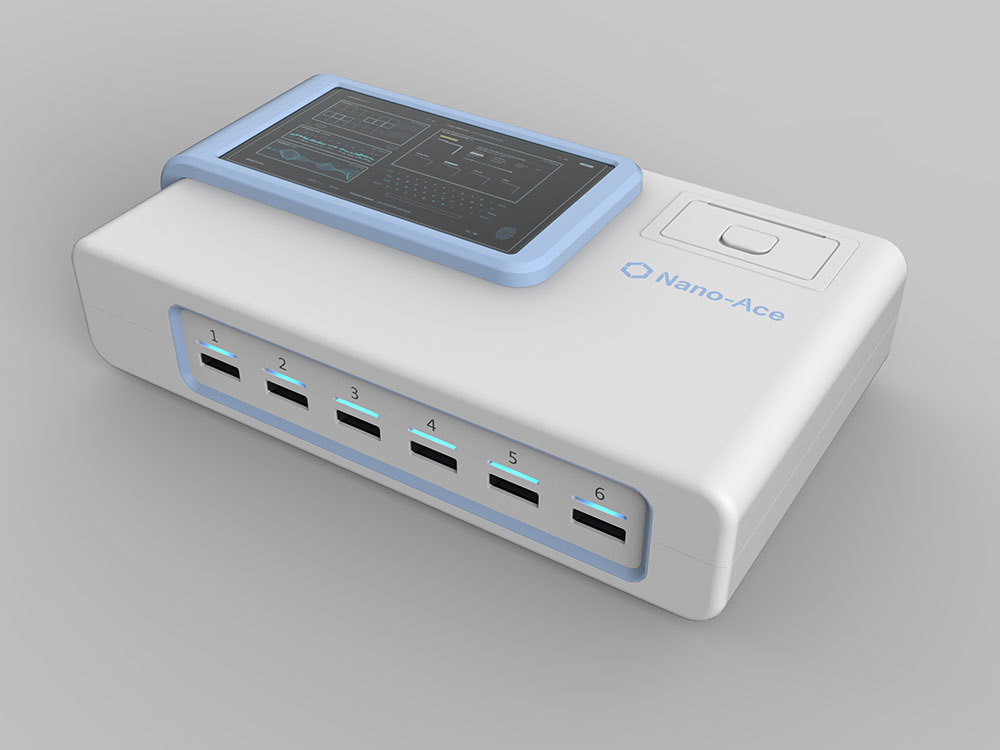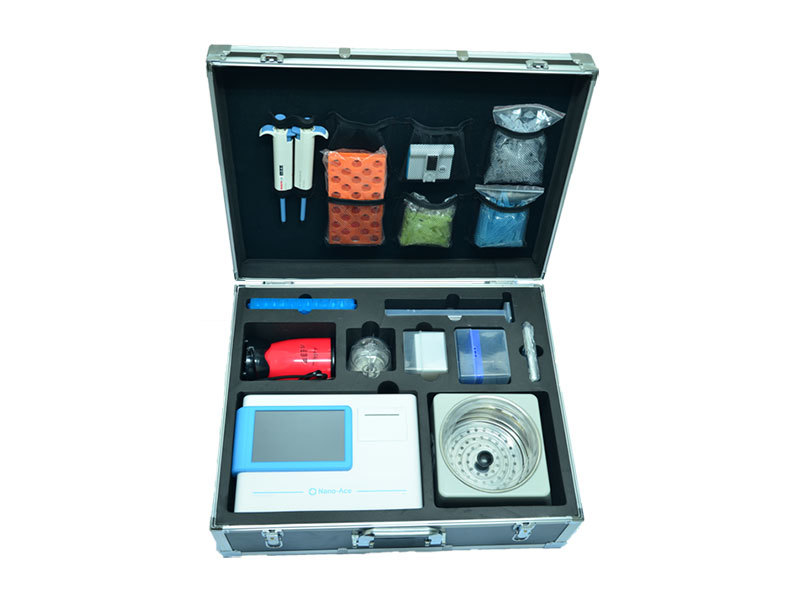Antibiotic class fluorescence quantitative test card
In the process of agricultural production, antibiotics are used to prevent and treat diseases in animal derived foods such as fish, chicken and pork. However, the use of veterinary drugs will undoubtedly lead to the retention or accumulation of animals and enter the human body and ecosystem in the form of residues. With the increasing improvement of people's living standards and quality of life, the general public is paying more and more attention to the problem of veterinary drug residues in food, and pollution-free and green food has been placed on the important agenda.
Classification:
keywords: Antibiotic class fluorescence quantitative test card
online messageProduct Details
In the process of agricultural production, antibiotics are used to prevent and treat diseases in animal derived foods such as fish, chicken and pork. However, the use of veterinary drugs will undoubtedly lead to the retention or accumulation of animals and enter the human body and ecosystem in the form of residues. With the increasing improvement of people's living standards and quality of life, the general public is paying more and more attention to the problem of veterinary drug residues in food, and pollution-free and green food has been placed on the important agenda.
Nitrofurans have been one of the common veterinary drugs at home and abroad, mainly including furazolidone, furazone, furatadone and nitrofurantoin. They have antibacterial and anti-inflammatory effects and have been widely used in the production of livestock and aquatic products. However, it was later discovered that after nitrofuran drug residues are eaten by humans in animals, they can easily cause allergies, headaches, diarrhea and other symptoms. In severe cases, they can also cause "three causes" hazards. Therefore, China, the United States, Japan, South Korea, Canada, the European Union and other countries prohibit the detection of such drugs in animal-derived food, and have formulated relevant limit standards, and continue to invest in research in order to establish a better detection method and use it to monitor the residues of nitrofurans in animal-derived food to protect the lives of consumers and producers. It is urgent to establish a rapid, sensitive and accurate detection method.
Sulfonamides have been widely used in the treatment of livestock and poultry diseases because of their own characteristics, but due to their serious side effects and accumulation in the human body, many bacteria will produce drug resistance and potential carcinogenicity, which seriously threatens human health. Sulfonamides tissue residues and serious feed contamination, such as sulfamethazine in continuous administration can induce rodent thyroid hyperplasia. Sulfonamides have a tendency to cause tumors.
Quinolones have been widely used in the prevention and treatment of various infectious diseases in animals due to their broad antibacterial spectrum and strong sterilization. Among them, fluoroquinolones are the most widely used in food-borne animals, and most of the animal-derived foods have such drug residues. If people take the food with these drugs for a long time, they may have some adverse reactions: ① affect the central nervous system; ② affect the digestive system; ③ allergic reaction; ④ mutagenic carcinogenesis. Most quinolones have photosensitivity, and individual varieties have shown mutagenic effects in eukaryotic cells.
The "National Food Safety Standard Maximum Residue Limits for Veterinary Drugs in Food" stipulates that florfenicol, as a broad-spectrum antibacterial drug, can be used in pigs, cattle, sheep, poultry, fish and other livestock. Florfenicol is generally through feed additives or poultry disease treatment lead to the accumulation of residues in livestock and poultry. Florfenicol has an anti-inflammatory effect on the reproductive system of chickens, but at the same time it slightly inhibits the production of reproductive hormones, causing the death of early embryos in eggs. Therefore, the "National Food Safety Standard Maximum Residue Limits for Veterinary Drugs in Foods" stipulates that "poultry (egg laying is prohibited)". From the inspection point of view, chicken, skin, fat, liver, and kidney are allowed to be detected, but not in eggs. According to the relevant regulations and standards of the United States, florfenicol can be used in pigs, cattle and fish, while the European Union only allows it to be used in fish.
Veterinary tetracycline antibiotics are a class of broad-spectrum antibiotics with tetracene structure, which are mainly divided into natural and semi-synthetic types. They are oral, broad antibacterial spectrum, less toxic, rarely allergic, and more serious drug resistance, but they inhibit bacterial growth and have weak effects (less than penicillin or streptomycin).
Veterinary tetracycline antibiotics mainly include oxytetracycline, tetracycline, chlortetracycline, doxycycline, minomycin, methenomycin, etc. Each of them has its own emphasis on the therapeutic effect, and the dosage requirements are different. In the use of different livestock species, attention should be paid to following the doctor's advice or specific application according to the requirements of the product instructions.
Methods:Rapid detection; Fluorescence quantitative immunochromatography;
Scope of application:This method is suitable for the quantitative detection of chicken, pork, fish and shrimp.
Detection principle:This product is detected by the principle of competitive immune response.
Microporous part: a certain number of microsphere antibody marker freeze-dried powder; Test strip part: there are two capture lines, the upper one is the control line (line C), and the lower one is the detection line (line T).
The sample is added to the microwell to mix and react, and the antibody on the marker binds to the corresponding substance to be detected in the sample to form an immune complex; Then the mixed liquid is added to the sample adding place of the test strip, and the mixed liquid is chromatographed upward along the test strip. When there is no substance to be detected in the sample, fluorescent signal appears on T line. On the contrary, no or lighter fluorescent signal appears on T line. The fluorescence signal ratio of T line and C line is inversely proportional to the content of the sample. Quantitative detection of target content by comparison with the standard curve built in the supporting fluorescence immunoassay analyzer.
Product List
|
Item Name |
Quantitative range |
reaction temperature |
Detection time |
Accuracy |
Precision |
|
nitrofurantoin metabolite |
0.5 ~ 5 μg/kg |
37℃ |
7min |
80-120% |
15% |
|
furaltanone metabolite |
0.5 ~ 5 μg/kg |
37℃ |
7min |
80-120% |
15% |
|
furacilin metabolite |
0.5 ~ 5 μg/kg |
37℃ |
7min |
80-120% |
15% |
|
Furazolidone Metabolites |
0.5 ~ 5 μg/kg |
37℃ |
7min |
80-120% |
15% |
|
Sulfonamides |
5 to 50 μg/kg |
37℃ |
7min |
80-120% |
15% |
|
Fluoroquinolones |
5 to 50 μg/kg |
37℃ |
7min |
80-120% |
15% |
Florfenicol: used for quantitative detection of florfenicol residues in eggs (chicken, duck, goose, etc.). Quantitative detection range: 0.2~5 μg/kg.
Tetracyclines: used for quantitative detection of tetracycline residues in animal tissues (chicken, pork, fish, shrimp, etc.). Quantitative detection range: 5~100 μg/kg
Supporting equipment:


Operation process:

Previous
Previous
online message
Filling in your phone and E-mail information will help us to contact you in time and solve your problem as soon as possible.


